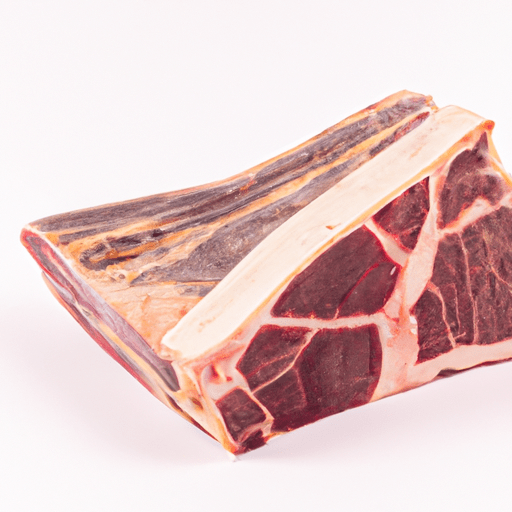Uncovering the Mouthwatering Pleasure of Bone-In Short Ribs
If you consider yourself a meat lover, then bone-in short ribs are guaranteed to leave you salivating. These succulent cuts of beef offer a delightful blend of flavors that will transport your taste buds to carnivorous heaven. In this blog post, we will dive into the mouthwatering world of bone-in short ribs, exploring their taste, common uses in cooking, nutritional value, and some intriguing history and facts.
Tantalizing Taste
Bone-in short ribs are renowned for their intense, rich flavor. The combination of meat and fat results in a tender and buttery texture when cooked low and slow. These delectable cuts boast a deep beefy taste that is hard to resist. The marbling of fat within the meat lends itself to a succulent and juicy finished product, ensuring a truly satisfying dining experience.
Versatile in the Kitchen
Bone-in short ribs are a versatile ingredient that lends itself to a variety of culinary creations. They can be braised, slow-cooked, grilled, or even smoked, allowing for endless possibilities in the kitchen. Whether you prefer a hearty stew, a luscious braise with a rich sauce, or succulent grilled ribs with a smoky flavor, bone-in short ribs deliver exceptional taste and tenderness.
Nutritional Value
While bone-in short ribs are undeniably rich in flavor, they also offer some nutritional benefits. They are an excellent source of protein, essential for repairing tissues and building muscle. Additionally, they contain essential vitamins and minerals, including iron, zinc, and B vitamins. However, it’s important to note that bone-in short ribs can be high in fat content, so it’s best to enjoy them in moderation as part of a balanced diet.
From History to Your Plate
Bone-in short ribs have a fascinating culinary history. In the early 20th century, short ribs were predominantly served as a cheaper, less desirable cut of meat. They were often braised or slow-cooked to transform their tough texture into a tender and flavorful delight. Over time, their popularity has skyrocketed, and they are now considered a coveted ingredient in fine dining establishments and home kitchens alike.
A Few Fun Facts
- Bone-in short ribs are sometimes referred to as “Jacob’s Ladder” due to their rib bone shape resembling a ladder rung.
- Korean cuisine has a beloved dish called “Galbi,” featuring bone-in beef short ribs marinated in a sweet and savory sauce and grilled to perfection.
- In Asian cuisine, bone-in short ribs are often used in soups, stews, and braises, creating deeply comforting and flavorsome dishes.
So, the next time you find yourself craving something indulgent and satisfying, look no further than bone-in short ribs. Their irresistible taste, versatility in the kitchen, and historical significance make them a true carnivorous delight. Treat yourself to a culinary adventure by exploring the endless possibilities that these succulent cuts of beef have to offer. Happy cooking!
Sure! Here are some interesting facts about bone-in short ribs:
- Origin: Bone-in short ribs come from the rib section of beef, specifically from the meat between the rib bones. They are cut into short lengths and typically include a portion of the rib bone.
- Common uses: Bone-in short ribs are popular for braising, slow cooking, and barbecuing. The bones add flavor and richness to the meat during the cooking process.
- Nutritional benefits: Bone-in short ribs are a good source of high-quality protein, essential vitamins, and minerals. They contain significant amounts of iron, zinc, B vitamins, and phosphorus.
- Unique properties: Bone-in short ribs are known for their tender, flavorful meat and marbled texture due to their high-fat content. The bones contribute to the rich flavor and moisture during cooking.
- Historical significance: Short ribs have a long culinary history dating back to ancient times. Traditionally, they were considered a cheaper cut of meat since they required slow cooking to become tender. Nowadays, they are highly regarded for their excellent flavor and are commonly featured in various cuisines around the world.
Remember to adjust cooking times and methods based on personal preferences and recipe instructions. Enjoy your bone-in short ribs!




Use the share button below if you liked it.
It makes me smile, when I see it.